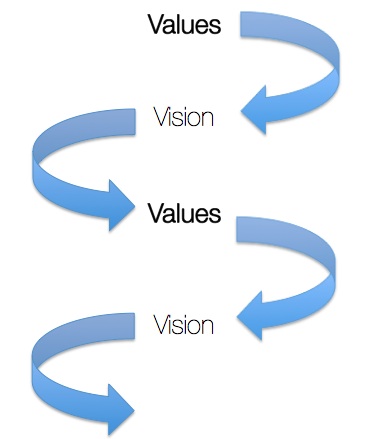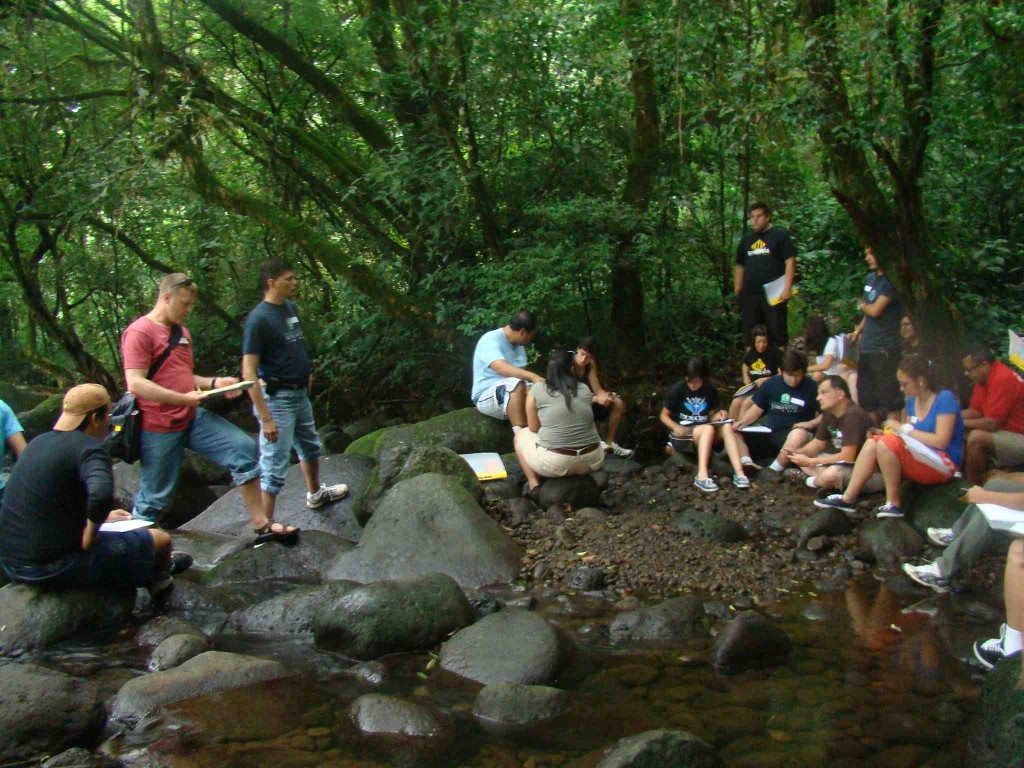Thus says the Lord: ‘Stand by the roads, and look, and ask for the ancient paths, where the good way is; and walk in it, and find rest for your souls.” (Jeremiah 6:16)
Leading with vision is not easy. It does not look like a casual stroll through the park on a wide well-maintained path. Rather, leading with vision looks more like a jungle adventure, meandering through ups and downs, scaling sharp cliffs, making progress at times, and at other times standing still. One of the observations I’ve made about leading with vision is that that good visionary leaders understand the “Vision-Values Cycle.” Whether you are leading a small group, classroom, a business, or a family… here are some insights that will help you stay on your mission by using the Vision-Values Cycle Tool.
 1. Vision is about Utmost Essentials
1. Vision is about Utmost Essentials
Visionary leadership is vital to any group because it has to do with the utmost essentials. Vision is about what we believe “must” happen. It is driven by values. Yet groups or organizations are “organic” by nature: ever-changing with new people, new ideas, changing climates and terrains, etc.. As a result, visionary leaders must constantly remind those who are following them what the vision is, and what the values are that give us motivation to carry out the vision.
2. The Relationship between Vision and Values
Vision is determined largely by Values. The better visionary leaders determine their values, and then vision flows from this. So on the journey of leading others, if you get bogged down and lack vision, juts go back to your values. And vice-versa: If you feel strong on vision, goals and ambitions, but you lack motivation to fulfill your vision, then go back to your values and be reminded why you are on the course you are on. This will re-invigorate your vision. This is leading through the Vision-Values Cycle. Vision leaders are always on this path somewhere. Stop regularly to evaluate where you are and what you need to refocus on based upon your situation: Vision or Values.
3. What is Your Vision?
Remember that vision has to do with a very high level view (from above the trees) of your groups long term aspirations. What does your group believe “must” happen. Ask yourself: If we don’t accomplish this vision will our group become irrelevant? Vision is not about pursuing a good idea, it is about pursuing what is good, what is right, and what is needed now. It has to do with those things that are essential to life and relationships.
RELATED POST: Vision Statements | A Word is Worth a Thousand Pictures
4. What are Your Values?
Values are those timeless priorities that you keep coming back to. The prophet Jeremiah speaks about values as “the ancient path.” Values guide the whole group because every team member shares these priorities. Values are bigger than individuals, they should be timeless and rooted in over-arching, truths that spring from God’s Design for life and relationships.
If your team needs a reminder of what your values are, then use your next team meeting to ask them to help you write down a list of your enduring values. Question your stated values or create a rubric to evaluate whether they are timeless. Since I come from a Christian worldview, the source of my values comes from the Bible. Values are so essential to this process because values compete with each other. As a follower of Christ, sometimes I must reject the values of the world because they are opposite of the values of the Kingdom of God expressed in the Bible. So what are your top 3-5 values?
5. If You are Lost, Sit Down, Wait, and Evaluate
RELATED POST: 3 Ways to Prepare for the Most Common Crisis’ in Wilderness Leadership
If you get lost in the wilderness, the best thing to do is stop, sit down, collect your thoughts, and wait for someone to find you. In organizational terms what this looks like is: 1) Stop, 2) Go back to your values 3) Re-communicate and cast your vision to those who are depending on you to lead. Here are a couple action steps that might help:
1. Stop: Take a retreat of a few hours or an overnight and get away for some meaningful time of solitude and prayer.
2. Values: Identify the values driving your group, church, family, business, or classroom, and create a rubric to filter out and judge whether they are timeless or not.
3. Vision: Let your values re-invigorate your vision for what you believe “must happen”, and then find some creative ways to re-engage your teams with fresh vision.

